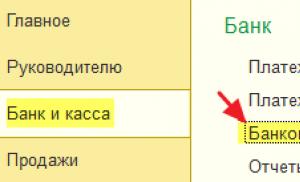How does a spider weave a web, where does spider silk come from? Why do spiders weave webs?
Representatives of the arachnid order can be found everywhere. These are predators that hunt insects. They catch their prey using a web. This is a flexible and durable fiber to which flies, bees, and mosquitoes stick. How a spider weaves a web is a question often asked when seeing an amazing catcher net.
What is a web?
Spiders are one of the oldest inhabitants of the planet, due to small size and specific appearance they are mistakenly considered insects. In fact, these are representatives of the order of arthropods. The spider's body has eight legs and two sections:
- cephalothorax;
- abdomen.
Unlike insects, they do not have antennae and a neck separating the head from the chest. The abdomen of an arachnid is a kind of factory for the production of cobwebs. It contains glands that produce a secretion consisting of protein enriched with alanine, which gives strength, and glycine, which is responsible for elasticity. According to the chemical formula, cobwebs are close to insect silk. Inside the glands, the secretion is in a liquid state, but when exposed to air it hardens.
Information. Caterpillar silk silkworm and spider webs have a similar composition - 50% is fibroin protein. Scientists have found that spider thread is much stronger than caterpillar secretion. This is due to the peculiarity of fiber formation
Where does a spider's web come from?
On the abdomen of the arthropod there are outgrowths - arachnoid warts. In their upper part, the channels of the arachnoid glands open, forming threads. There are 6 types of glands that produce silk for different purposes (moving, lowering, entangling prey, storing eggs). In one species, all these organs do not occur at the same time; usually an individual has 1-4 pairs of glands.
On the surface of warts there are up to 500 spinning tubes that supply protein secretion. The spider spins its web as follows:
- spider warts are pressed against the base (tree, grass, wall, etc.);
- a small amount of protein adheres to the selected location;
- the spider moves away, pulling the thread with its hind legs;
- for the main work, long and flexible front legs are used, with their help a frame is created from dry threads;
- The final stage of making the network is the formation of sticky spirals.
Thanks to the observations of scientists, it became known where the spider’s web comes from. It is produced by movable paired warts on the abdomen.
Interesting fact. The web is very light; the weight of a thread wrapping the Earth along the equator would be only 450 g.
Spider pulls thread from abdomen
How to build a fishing net
The wind is the spider's best assistant in construction. Having taken out a thin thread from the warts, the arachnid exposes it to an air flow, which carries the frozen silk over a considerable distance. This secret way like a spider weaving a web between trees. The web easily clings to tree branches, using it as a rope, the arachnid moves from place to place.
A certain pattern can be traced in the structure of the web. Its basis is a frame of strong and thick threads arranged in the form of rays diverging from one point. Starting from the outer part, the spider creates circles, gradually moving towards the center. It is amazing that without any equipment it maintains the same distance between each circle. This part of the fibers is sticky and is where insects will get stuck.
Interesting fact. The spider eats its own web. Scientists offer two explanations for this fact - in this way, the loss of protein during the repair of the fishing net is replenished, or the spider simply drinks water hanging on the silk threads.
The complexity of the web pattern depends on the type of arachnid. Lower arthropods build simple networks, while higher ones build complex geometric patterns. It is estimated that it builds a trap of 39 radii and 39 spirals. In addition to smooth radial threads, auxiliary and catcher spirals, there are signal threads. These elements capture and transmit to the predator the vibrations of the caught prey. If a foreign object (a branch, a leaf) comes across, the little owner separates it and throws it away, then restores the net.
Large arboreal arachnids pull traps with a diameter of up to 1 m. Not only insects, but also small birds fall into them.
How long does it take a spider to weave a web?
A predator spends from half an hour to 2-3 hours to create an openwork trap for insects. Its operating time depends on weather conditions and planned network sizes. Some species weave silk threads daily, doing it in the morning or evening, depending on their lifestyle. One of the factors determining how long it takes a spider to weave a web is its type – flat or voluminous. The flat one is the familiar version of radial threads and spirals, and the volumetric one is a trap made from a lump of fibers.
Purpose of the web
Fine nets are not only insect traps. The role of the web in the life of arachnids is much broader.
Catching prey
All spiders are predators, killing their prey with poison. Moreover, some individuals have a fragile constitution and can themselves become victims of insects, for example, wasps. To hunt, they need shelter and a trap. Sticky fibers perform this function. They entangle the prey caught in the net in a cocoon of threads and leave it until the injected enzyme brings it into a liquid state.
Arachnid silk fibers are thinner than human hair, but their specific tensile strength is comparable to steel wire.
Reproduction
During the mating period, males attach their own threads to the female's web. By striking the silk fibers rhythmically, they communicate their intentions to a potential partner. The female receiving courtship descends onto the male’s territory to mate. In some species, the female initiates the search for a partner. She secretes a thread with pheromones, thanks to which the spider finds her.
Home for posterity
Cocoons for eggs are woven from the silky web secretion. Their number, depending on the type of arthropod, is 2-1000 pieces. The females hang the web sacs with eggs in a safe place. The cocoon shell is quite strong; it consists of several layers and is impregnated with liquid secretion.
In their burrow, arachnids weave webs around the walls. This helps create a favorable microclimate and serves as protection from bad weather and natural enemies.
Moving
One of the answers to why a spider weaves a web is that it uses threads as vehicle. To move between trees and bushes, quickly understand and fall, it needs strong fibers. To fly over long distances, spiders climb to elevated heights, release a quickly hardening web, and then with a gust of wind they fly away for several kilometers. Most often, trips are made on warm, clear days of Indian summer.
Why doesn't the spider stick to its web?
To avoid falling into its own trap, the spider makes several dry threads for movement. I know my way around the intricacies of nets perfectly, and he safely approaches the stuck prey. Usually, a safe area remains in the center of the fishing net, where the predator waits for prey.
Scientists' interest in the interaction of arachnids with their hunting traps began more than 100 years ago. Initially, it was suggested that there was a special lubricant on their paws that prevented sticking. No confirmation of the theory was ever found. Filming with a special camera the movement of the spider's legs along fibers from the frozen secretion provided an explanation for the mechanism of contact.
A spider does not stick to its web for three reasons:
- many elastic hairs on its legs reduce the area of contact with the sticky spiral;
- the tips of the spider's legs are covered with an oily liquid;
- movement occurs in a special way.
What is the secret of the structure of the legs that helps arachnids avoid sticking? On each leg of the spider there are two supporting claws with which it clings to the surface, and one flexible claw. As it moves, it presses the threads against the flexible hairs on the foot. When the spider raises its leg, the claw straightens and the hairs push away the web.
Another explanation is the lack of direct contact between the arachnid's leg and the sticky droplets. They fall on the hairs of the foot, and then easily flow back onto the thread. Whatever theories zoologists consider, the fact remains unchanged that spiders do not become prisoners of their own sticky traps.
Other arachnids, such as mites and pseudoscorpions, can also weave webs. But their networks cannot be compared in strength and skillful weaving with the works of real masters - spiders. Modern science is not yet able to reproduce the web using a synthetic method. The technology for making spider silk remains one of the mysteries of nature.
The web is a kind of secret produced by the arachnoid glands. Such a secretion, after a short time after release, is able to solidify in the form of strong protein threads. Cobwebs are produced not only by spiders, but also by some other representatives of the arachnid group, including pseudoscorpions and mites, as well as labiopods.
How spiders make webs
A large number of arachnoid glands are located in the abdominal cavity of the spider.. The ducts of such glands open into tiny spinning tubes that have access to the end part of special arachnoid warts. The number of spinning tubes may vary depending on the type of spider. For example, the very common cross spider has five hundred of them.
This is interesting! The arachnoid glands produce a liquid and viscous protein secretion, the peculiarity of which is the ability to almost instantly harden under the influence of air and turn into thin long threads.
The process of spinning a web involves pressing the spider warts onto a substrate. The first, insignificant part of the released secretion hardens and reliably sticks to the substrate, after which the spider pulls out the viscous secretion using its hind legs. In the process of removing the spider from the site of attachment of the web, the protein secretion stretches and quickly hardens. To date, seven are known and fairly well studied. different types arachnoid glands that produce different types threads
Composition and properties of the web
Spider web is a protein compound that also contains glycine, alanine and serine. The inner part of the formed threads is represented by hard protein crystals, the size of which does not exceed several nanometers. The crystals are held together by highly elastic protein bonds.
This is interesting! An unusual property of the web is its internal articulation. When hung on a spider's web, any object can be rotated an unlimited number of times without twisting.
The primary threads are intertwined by the spider and become thicker spider fibers. The strength indicators of the web are close to those of nylon, but are much stronger than the secretion of the silkworm. Depending on the purpose for which the web is intended to be used, the spider can produce not only sticky, but also dry thread, the thickness of which varies significantly.
Functions of the web and its purpose
Webs are used by spiders for a variety of purposes. A shelter woven from a strong and reliable web allows you to create the most favorable microclimatic conditions for arthropods, and also serves as a good shelter both from bad weather and from numerous natural enemies. Many arthropod arachnids are capable of weaving their web around the walls of their burrow or making it into a kind of door into their home.

This is interesting! Some species use webs as transport, and young spiders leave the parental nest on long web threads, which are picked up by the wind and transported over considerable distances.
Most often, spiders use webs to weave sticky trapping networks, which allows them to effectively catch prey and provide food to the arthropod. No less famous are the so-called egg cocoons made from webs, inside which young spiders appear. Some species weave web-like safety threads that protect arthropods from falling while jumping and for moving or catching prey.
Web for reproduction
The breeding season is characterized by the release of arachnoid threads by the female, which make it possible to find the optimal pair for mating. For example, male web-slingers are capable of constructing, next to the nets created by females, miniature mating web laces into which spiders are lured.
Male cross spiders deftly attach their horizontal webs to radially arranged strands of trapping webs made by females. By delivering strong blows to the web with their limbs, the males cause the web to vibrate and thus in an unusual way, invite females to mate.
Web for catching prey
In order to catch their prey, many species of spiders weave special trapping nets, but some species are characterized by the use of peculiar web lassos and threads. Spiders that hide in burrow dwellings place signal threads that stretch from the arthropod’s abdomen to the very entrance to its shelter. When prey falls into the trap, the vibration of the signal thread is instantly transmitted to the spider.

Sticky spiral trapping nets are built according to a slightly different principle. When creating it, the spider begins weaving from the edge and gradually moves towards the central part. In this case, the same gap between all turns is necessarily maintained, resulting in the so-called “Archimedes spiral”. The threads on the auxiliary spiral are specially bitten by the spider.
Web for insurance
Jumping spiders use web threads as insurance when attacking a victim. Spiders attach a safety thread of the web to any object, after which the arthropod jumps on the intended prey. The same thread, attached to the substrate, is used for overnight shelter and protects the arthropod from attacks by all kinds of natural enemies.
This is interesting! South Russian tarantulas, leaving their burrow home, pull behind them a thin web thread, which allows them to quickly find the way back or the entrance to the shelter if necessary.
Web as transport
By autumn, some species of spiders hatch their young. Young spiders that survive the process of growing up try to climb as high as possible, using trees, tall bushes, roofs of houses and other buildings, fences for this purpose. Having waited long enough strong wind, little spider produces a thin and long web.
The distance of movement directly depends on the length of such a transport web. Having waited for a good tension of the web, the spider bites off its end and takes off very quickly. As a rule, “travelers” are able to fly several kilometers on a web.

Silver spiders use webs as water transport. This spider requires breathing to hunt in bodies of water. atmospheric air. When descending to the bottom, the arthropod is able to capture a portion of air, and on aquatic plants a kind of air bell is constructed from the web, which holds air and allows the spider to hunt its prey.

According to popular belief, all spiders are harmful, from young to old, and whoever accidentally swallows a spider will suffer from dropsy or a tumor in the stomach.
On the contrary, in many countries of Europe and Asia it is highly revered - apparently, since the time when he was the only one who, with his web, rid the room of harmful flies.
Since ancient times, the spider has been part of witchcraft potions: it was dried, mixed with other ingredients, eaten alive, swallowed cobwebs, carried live spiders in a bag on the body - this is how asthma, whooping cough, gout and malaria were cured.
Spider in the house. Folk signs.

You should not be upset if a spider appears in the house, because according to many folk signs, this indicates reigning harmony and peace. A cobweb over the bed portends imminent and inevitable happiness.
In ancient Russian mythology spiders in the house- these are none other than brownie dogs. And the more wards he has, the more powerful protection your home.
When you see a spider sitting on a web, make a wish and say magic words: “If eight legs begin to go down, then my wish will come true.” And watch the spider's movement.
The only places where there should be no cobwebs in the house are the kitchen and the door. The presence of a cobweb in the kitchen means a lack of love in the house, and seeing it above the door for a girl means betrayal of a loved one. At the same time, under no circumstances should you remove the cobwebs - this will make the situation even worse.
In general, a spider in a house, according to popular belief, symbolizes the prosperity of the owners and, if you still need to get rid of it, carefully place it on a dustpan and take it outside.
See a spider. Signs.

By folk signs, to see a spider, in most cases, is for good, you just need to pay attention to what he is doing at that moment.
So, if a spider descends on a cobweb, then expect a letter or favorable news, the arrival of a guest, unexpected profit or a valuable gift. It is also important to see where the spider descended: on your hand - to an inheritance, on your head - your gift will soon appear, on clothes - to profit, but if the spider descended on the table - you have made an enemy.
The color of the spider also matters. A small red one means quick wealth, a black one means good news, a white one means good luck, and only a red spider promises misfortune.
If you see a spider on the street during the day, you will see it soon great love, but on your wedding day - to an unhappy family life.
You can also predict the weather based on the spider's actions. Weaves a lot of webs - for rain, tears them - for thunderstorms, good weather portends a large gathering of these animals.
Web. Folk signs.
Folk signs are characteristic not only of spiders, but also of the product of their activity - cobweb.
So, if the web clings to you, then you cannot avoid wealth. Accidentally touching it means meeting an old friend, and seeing a spider weaving a web means renewal.
A cobweb will get on your face, according to popular belief - to clear weather.
A spider web placed on a wound stops the bleeding. The web probably owes these qualities to the legend according to which Jesus Christ hid in it from Herod’s soldiers who were overtaking him.
There is no need to kill the spider; it is better to do as English folklore advises: “If you want to live and prosper, let the spider take a walk.”
How complete an answer did you receive: Total votes: 17 Average score: 4.1
Other folk signs and superstition.
 Sign of breaking a mirror.
Sign of breaking a mirror.
The mirror has always instilled mystical horror in superstitious people and gave birth to many, often contradictory, legends...
 Sign of a pimple on the nose.
Sign of a pimple on the nose.
Acne on the face, as a rule, always upsets us. We are afraid that even a small pimple can ruin our entire appearance...
What knots does a spider use when weaving its web? Or does it not use nodes at all?
When weaving a web, the spider does not use knots at all. He doesn’t need them: the spider glues the threads of the hunting net together with a special type of web - a connecting web.
The adhesive droplet consists of a glycoprotein core and an aqueous shell of water and peptides. The stickiness of a droplet depends on the humidity of the air: if it is very dry, some of the water may evaporate and the droplet will lose its properties. This is one of the reasons why humid climate more variety of spiders. Each spider species is adapted to a specific humidity range. This is achieved by varying the composition of the sticky droplets from species to species.
In addition to providing stickiness, the droplets also perform other functions. For example, in the Australian argiope spider ( Argiope keyserlingi) they can serve as bait for flies - its victims. Sticky droplets of argiope contain putrescine, a substance released during the decomposition of animal corpses. Therefore, carrion flies fly towards its smell and fall into a trap (see The web of the Argiope spider attracts insects with its smell, “Elements”, 07/17/2017).
So, we have figured out the properties of the spider thread. Let's now see how the web itself works. The basis of the web is made up of supporting threads - usually three or four of them - which the spider attaches with both ends to the substrate (for example, a tree branch or a grass stem) using connecting disks. Sometimes they are supported by additional anchor threads (see picture below). Radial ones are attached to the supporting threads, converging to the center of the web - the “hub”.
The spider applies a trapping spiral to the radial threads. Often the catching spiral does not reach the “hub” a little, leaving a free zone, the meaning of which is not yet clear. At the intersection of different threads there are the above-mentioned connecting disks that support the structure.

When insects get caught in a web, they most often stick to the catching spiral. But, of course, not tightly: by actively twitching, they can come unstuck and fly away - so the spider needs to hurry. Having learned about the catch, it immediately runs to the victim, bites it and then, immobilized, entangles it in its web. The secretion of the glands that open in its cheliceral jaws contains poison that paralyzes prey. In addition, the spider injects digestive enzymes into the victim, which break down its insides and turn them into a thick broth. The spider then sucks up this partially digested soup. And in order to notice prey in time, the webs of many species of spiders have special signal threads that lead directly to the spider sitting openly in the center of the web or in a secluded shelter on the periphery. When an insect begins to fight, it vibrates the web - including the signal threads. By their vibration, the spider determines that prey has been caught.
So different strands of the web perform different functions. Spiders can produce up to seven types of arachnoid threads, which differ in composition and properties and are secreted by different arachnoid glands. The supporting threads of the web are the strongest. But the threads of the catcher spiral are the stickiest, because they have the highest concentration of sticky droplets. Therefore, for example, it is the threads of the catching spiral that cling to a person walking through the forest. In addition, there is a special type of thread for wrapping the victim, thread for forming the soft inner layer of the cocoon for the eggs, and thread for the strong outer layer of the cocoon. And also a special connecting web.
But how is it that the spider itself does not stick to its web? When weaving a web, he touches the sticky catching threads only with the very tips of his legs, which are covered with numerous hairs, which reduces the area of contact with the sticky drops. In addition, the spider's legs are lubricated with a special oily substance that prevents sticking. Well, when a spider walks on its web, it moves along less sticky radial threads.
Answered: Alexey Opaev
Drawing Ekaterina Volovich
like a spider weaves a web
- The web and the construction of nets. Ability to secrete arachnoid filament characteristic feature almost all spiders. The material for it is formed in special glands located in the back of the abdomen, and the so-called. spider warts. Some spiders produce threads of different (up to six) types and use each of them for very specific purposes.
As the spider moves, it continuously secretes webs, which, like a climber's safety rope, it periodically attaches to the surfaces it passes over. That is why a disturbed spider can almost always cross its legs, fall from the support and, hanging on an extensible thread, descend along it to the ground. When prey gets into the net, the spider usually entwines it with a web and only then kills it with poisonous claws (chelicerae) and sucks it out.
Probably the most interesting feature spiders construct trapping nets from webs. Their forms are very diverse and often very beautiful. Not all spiders use their webs to catch insects, but each species weaves it in a specific way, and the resulting structure may well serve as a taxonomic character. The most beautiful, so-called. Wheel-shaped, nets are built by orb-weaving spiders from the family of spiders (Araneidae). First the spider climbs onto high place, usually near a path or other open space, and secretes a very light thread, which is picked up by the breeze and, accidentally touching a neighboring branch or other support, is braided around it. The spider moves along this thread to a new point, strengthening the web along the way with an additional secretion. In a similar way, two or three more relatively thick cables are laid, making up a closed frame, inside which the catching structure itself will be located.
- The question of the origin of silk in spiders, which has long worried arachnologists, remains relevant today. There is no direct evidence of the origin of the web, where it came from. After all, the web is not preserved in a fossil state. Therefore, scientists can only offer hypotheses for the origin of spider silk, based on the study of the anatomy of spiders and the features of their web activity. The most probable is the hypothesis of G. McCook, in which an American researcher of spider behavior suggested that primitive spiders, like modern centipedes, left trace marks during movement with excretory secretions of special glands located at the base of their legs. According to McCook, the excretory function of these glands over time completely transferred to the anterior ones (in living spiders, at the base of the first pair or the first and third pairs of legs there are excretory coxal glands), some were reduced, and those remaining on the abdomen retained the ability to mark marks. The trace secretions were replaced by elastic protein silk, and some of the abdominal appendages were transformed into arachnoid warts. And today, most spiders constantly pull the web thread along with them while moving, and the threads of females can be a good guide for males in their search for a sexual partner. Confirmation of this hypothesis is proven based on the study individual development the origin of arachnoid warts from the rudiments of the abdominal limbs. Other hypotheses do not have widespread scientific support. For example, R. Pocock and W. Bristowe suggested that the web was released from the mouth to lubricate the egg laying. The Dutchman Arthur Decae proposed a “marine” hypothesis, according to which the web of the first spiders appeared even before they became terrestrial. IN aquatic environment, A. Dike believes, the web could save holes made in the sea soil from destruction or filling with sediment.
Chemical composition. Physical properties of silk
The secretion of the arachnoid glands is a viscous, partly rubber-like mass that quickly hardens when in contact with air. By chemical composition The web is close to the silk of silkworm caterpillars, differing in its lower content of sericin, an adhesive substance that is soluble in water. The basis of spider and caterpillar silk is fibroin, which is insoluble in water, consisting of a complex complex of albumins, alpha-alanine and glutamic acid. By physical properties spider threads are different from caterpillar and artificial silk greater strength. Thus, the breaking force, expressed in kg per 1 mm2, for spiders ranges from 40 to 261, and for caterpillar and artificial silk, respectively, does not exceed 43 and 20. The web has antibiotic properties, especially the one that is used to make the cocoon, protecting the eggs from the harmful effects of bacteria and molds. If necessary, the spider can secrete sticky or dry thread of a certain thickness and color. Dry (non-sticky) thread is used to make a cocoon and to build vertical wheel-shaped nets in orb-weaving spiders. The last of these threads tension the network frame and its internal radii. The adhesive thread is based on double silk fibers covered with a layer of sticky mucous secretion. Soon after the formation of these threads, the sticky layer fragments due to surface tension, forming tiny droplets (like beads on a string). This sticky coating is short-lived and loses its properties as it dries. Therefore, most spiders that weave webs from such silk must periodically renew the sticky thread.
- How a spider creates a web:
The most difficult part is the first thread. The solution is simple. The spider produces a sticky thread that is easily carried far in the wind. If the wind carries the thread to the place where it sticks, the first bridge is formed. The spider carefully crawls along this thread and strengthens it with a second thread of the web. And so on until this supporting thread becomes strong enough.
After this, the spider makes a free loop and builds a figure similar to the letter Y. These are the first three radial rays of the web. A frame is then constructed to construct the remaining radials of the network.
The spider chooses such a distance between the radial rays of the web that it can easily move between them. The radial rays are built, now all that remains is to apply a sticky thread in a spiral between the rays, and the network is complete.













